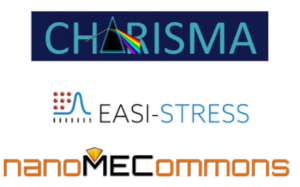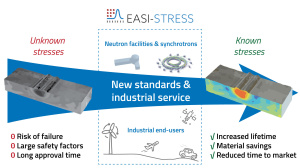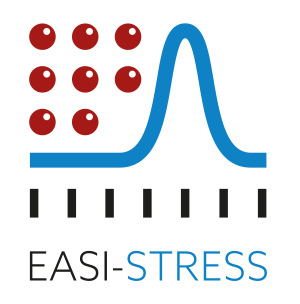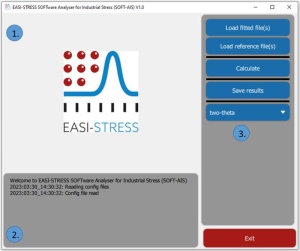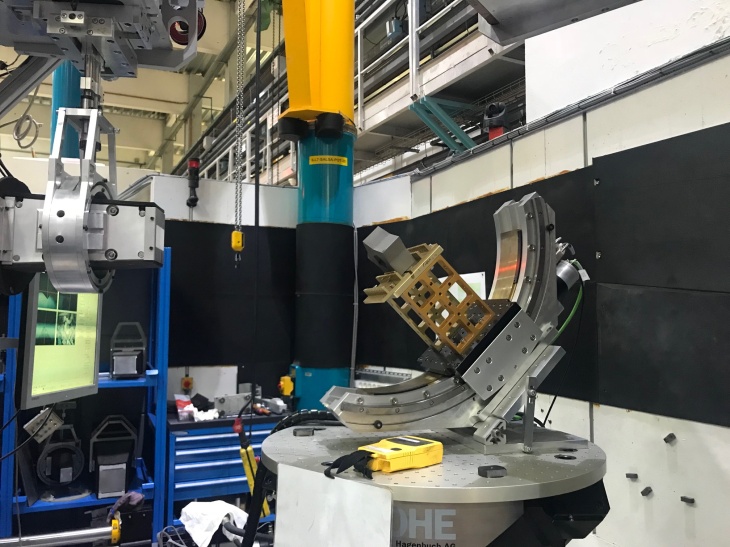
© ILL
The EASI-STRESS project has the overall aim to strengthen industrial access and uptake of non-destructive synchrotron x-ray and neutron diffraction-based residual stress characterization tools by validation against accepted destructive techniques and development of protocols, in close collaboration with industry.
This will enable a better understanding of the formation and progression of residual stresses by direct comparison with and incorporation of the measured data into modelling tools. Incorporating this knowledge into the design process and lifetime assessment of metallic components will give more reliable products with increased lifetime and reduced material usage.
Currently, conservative worst-case-scenario safety factors, e.g. as defined by EUROCODE, are used when designing metallic components exposed to cyclic loads. In knowing the actual internal stress levels, the safety factors can be reduced, resulting in an estimated material cost saving of around 15 %.
The total value of metallic structures across the industrial sectors represented by the partners is estimated as having a production value of more than EUR 100 billion per year. Other industrial benefits include increased lifetime and reduced time-to-market.
- EU-Programme Acronym and Subprogramme Area: H2020-NMBP-TO-IND-2018-2020
- Project Type: Research & Innovation Action
- Contract Number: Grant Agreement 953219
- Lead Partner: Danish Technological Institute (DK)
- Funding for the Project: 4,739,672 €
News
Events


